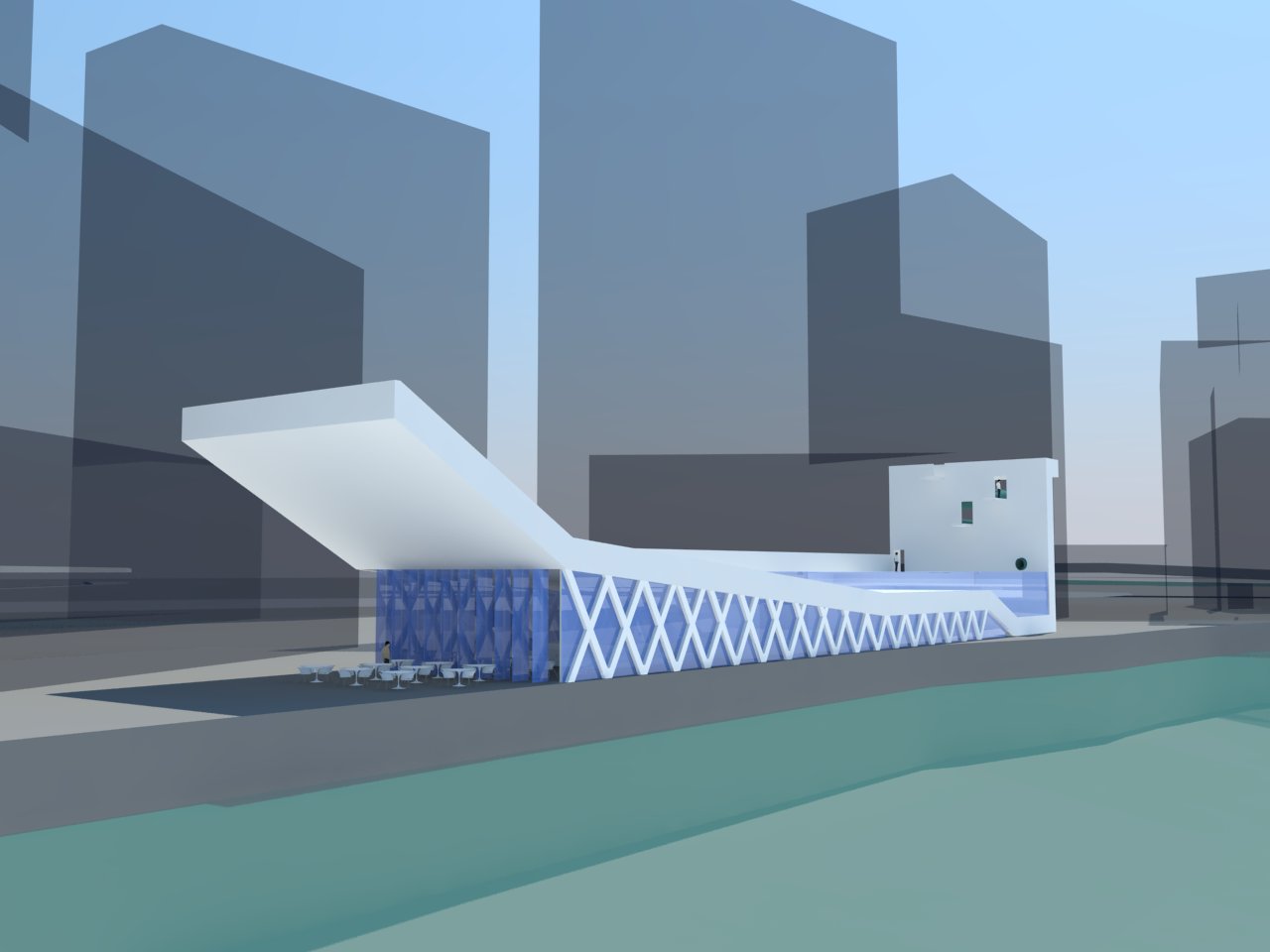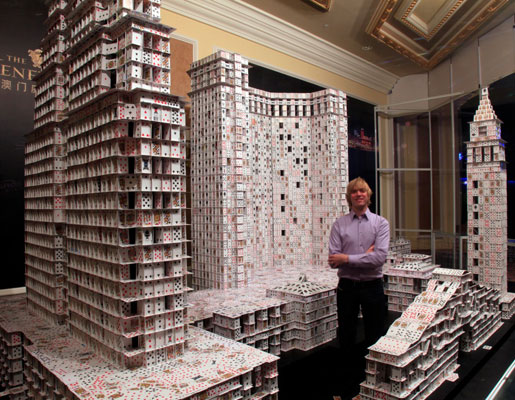048per_DECONSTRUCTION OR SURGICAL DEMOLITION? Landscape 1 Architecture 0.
In the context of physical construction, deconstruction is the selective dismantlement of building components, specifically for re-use, recycling, and waste management. It differs from demolition where a site is cleared of its building by the most expedient means. Deconstruction has also been defined as “construction in reverse”. The process of dismantling structures is an ancient activity that has been revived by the growing field of sustainable, green building. Buildings, like everything, have a life-cycle. Deconstruction focuses on giving the materials within a building a new life once the building as a whole can no longer continue.
Looking at the ‘demolition’ photos, and not a single tree appears to have suffered, it looks like Landscape 1 Architecture 0.




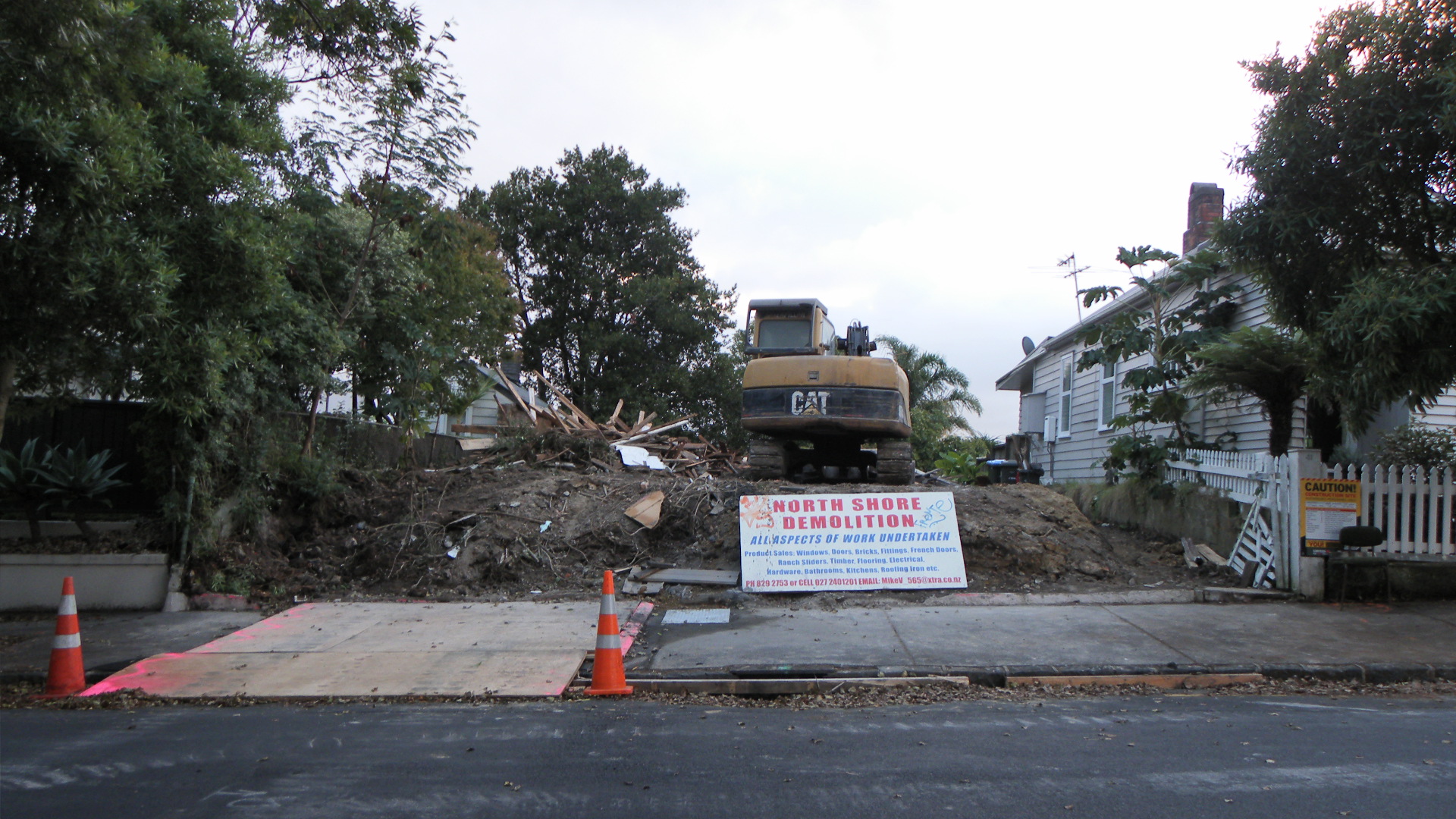
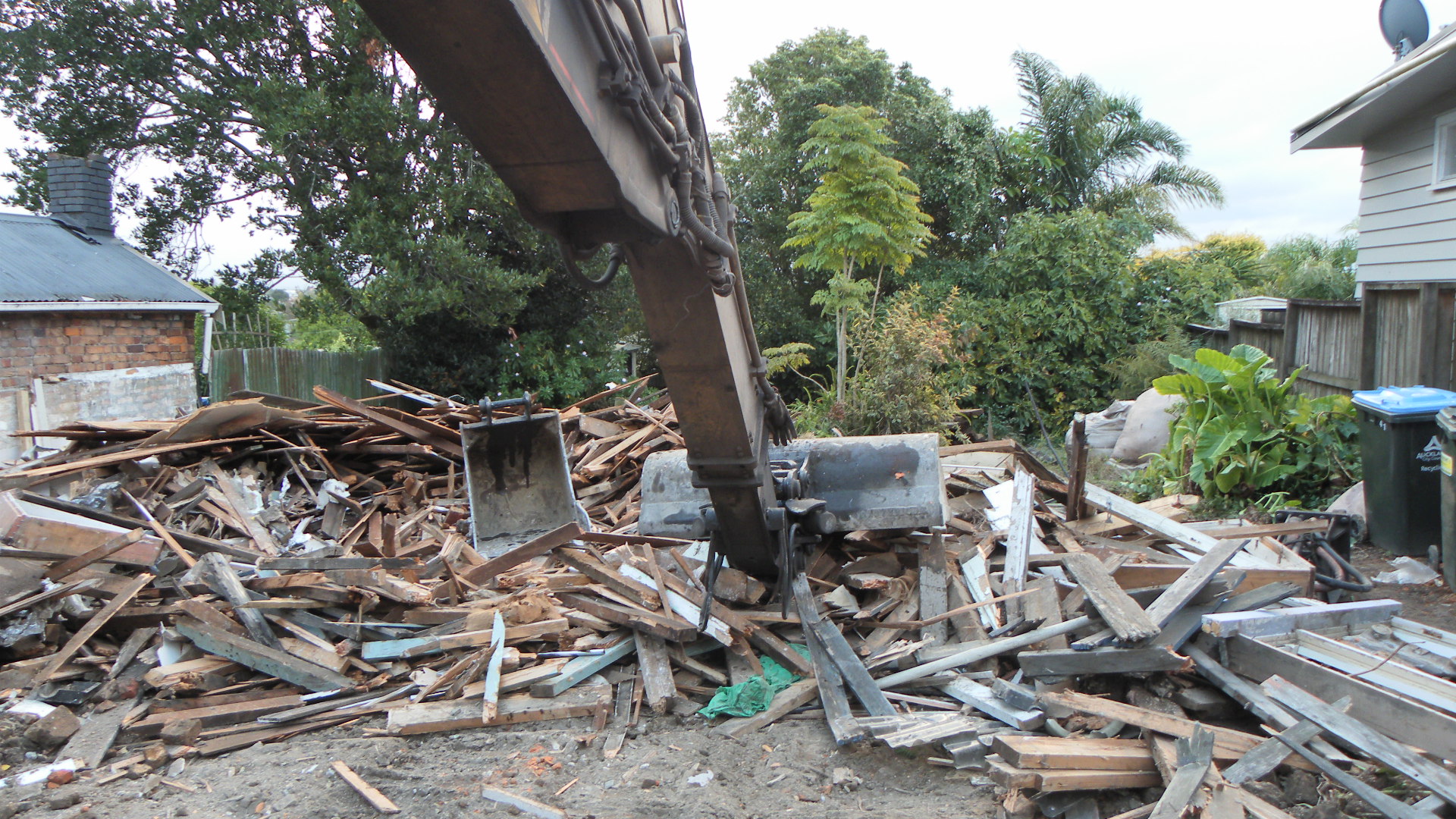







162ico_HYBRID/GE™ AMSTERDAM
Hybrid/ge™ is a series of recycled bridges, a ‘collection of connections’ reconfigured to a new host city. Hybrid/geTM dismantles contemporary architecture’s pursuit of the iconic. The aesthetic is determined through an assemblage of relocated histories rather than the pursuit of a singular style. Bridges that were once merely spaces of transition will become spaces of occupation.
Hybrid/ge’s iconography is drawn from the aesthetic of money and in these recessionary times we need to promote ideas of economic sustainability. None of the assembled bridges are implicitly iconic but their composition can become ‘iconic’: the sum is greater than the parts. To merely pursue an ‘icon’ is futile as this promote visual attraction over social connection – and Amsterdam has plenty of other passages where one could go for an optic wanderlust.
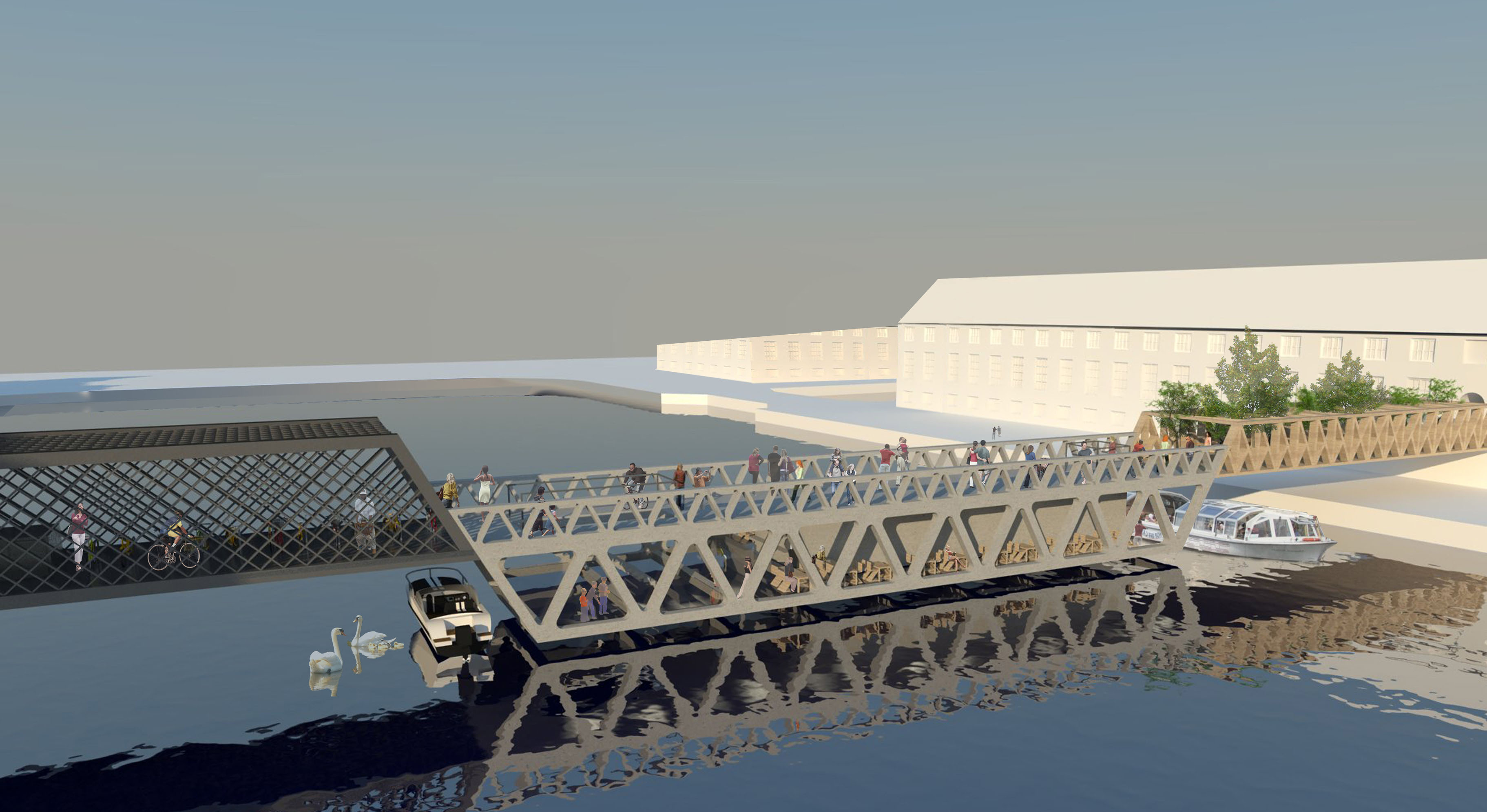


000off_WHAT_Saabrchitecture.
In December 2011, the Swedish car manufacturer Saab went into bankruptcy. The company had been mortally wounded since April when it ran out of cash, could not pay its suppliers and had to stop building cars. After eight months of extraordinary and desperate negotiations over potential rescues, it looked like Saab was safe when a sale was agreed with a Chinese manufacturer Youngman and distributor Pang Da. That deal was, however, called off as General Motors who owned Saab’s design patents considered copyright protection too weak in China and so expected its engineering would be pirated. So paradoxically, the designer’s favourite car will now disappear due to design infringement issues. The designer’s favourite? If we accept that a cliché contains at least a pixel of truth, then why was Saab seen as the Architect’s car? Was it because the driver wore black? What is the owner demographic? For the ten greatest Saabs in history: http://www.complex.com/rides/2009/12/saab-story-the-10-greatest-saabs-in-history
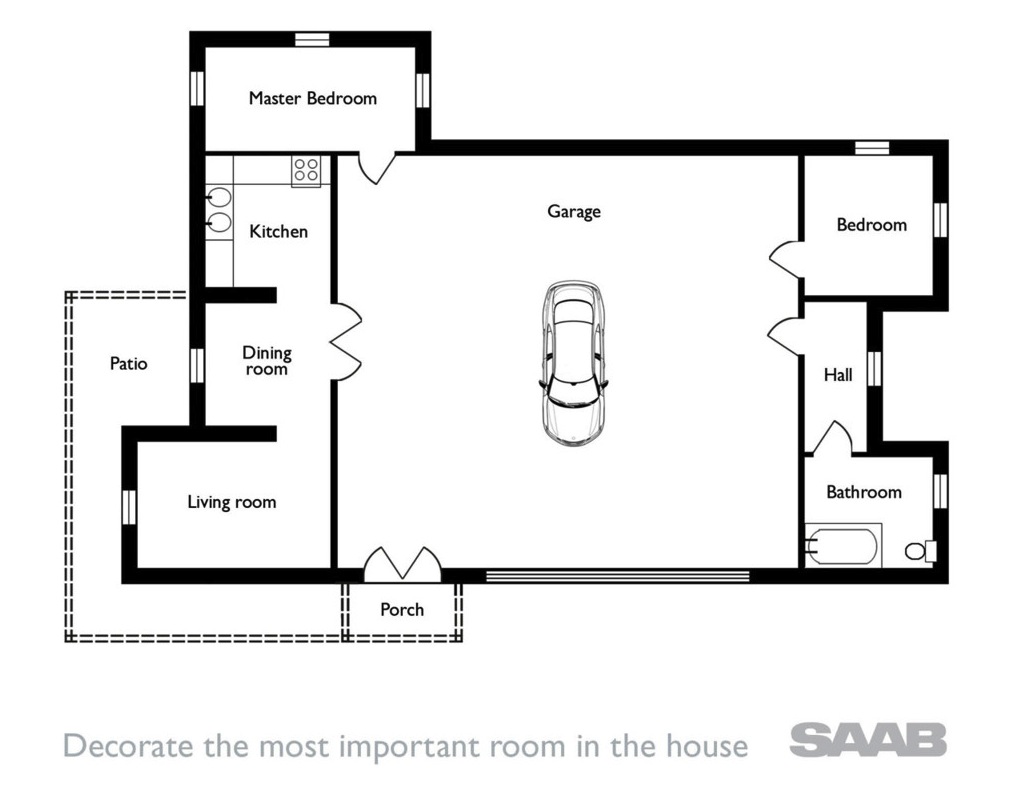
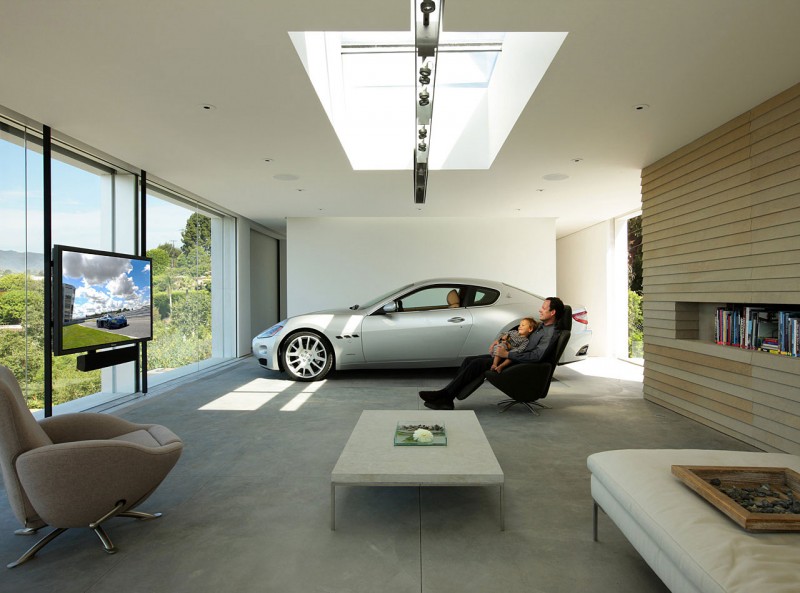
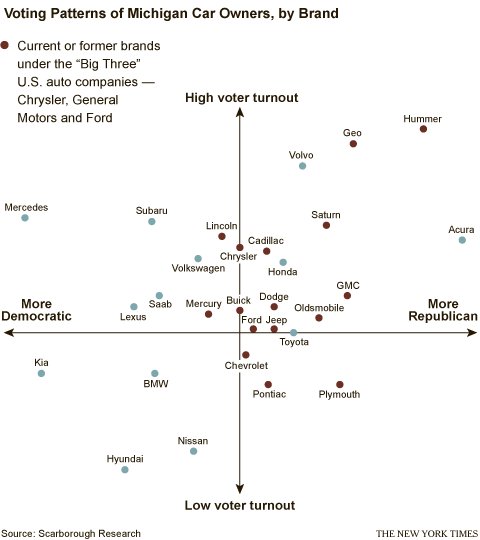
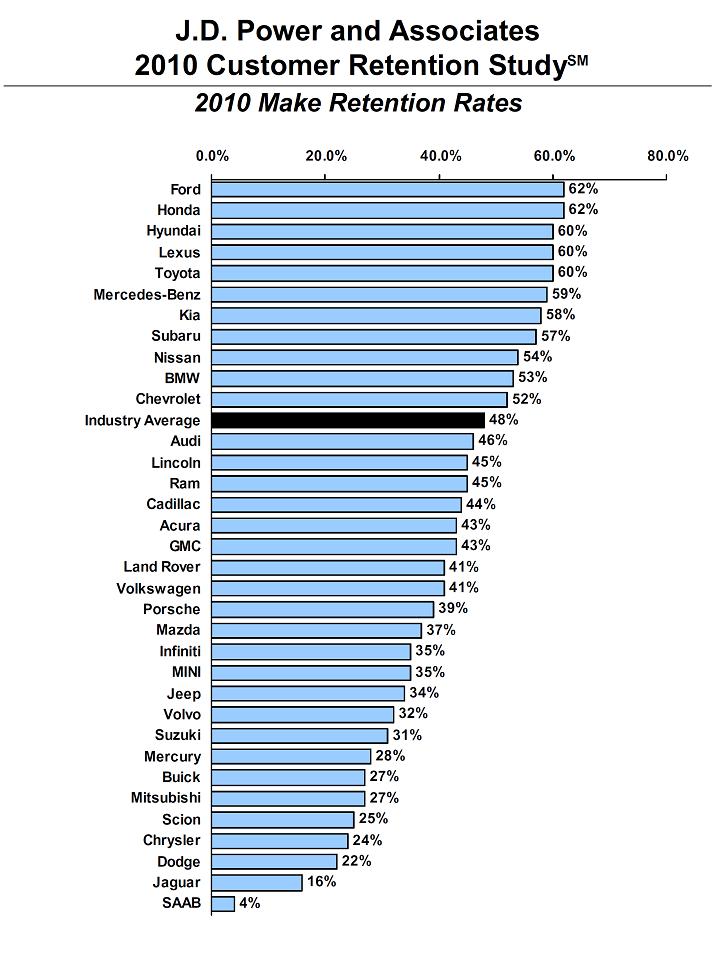 In the wake of Saab’s demise, which car manufacturers will architect’s now turn to? One way to project the future is to extrapolate the past. With the industrialisation of mobility, the modern age gained its definition. In Vers Une Architecture, Le Corbusier confirms his fascination with the morphologies and technologies of aircraft and automobiles. For Le Corbusier, the house was a machine à habiter, (‘a machine for living in’ or a kind of static car). One would have thought then that Corbusier would have embraced Saab given its unique position as being a manufacturer of both aircraft and automobiles (SAAB: Svenska Aeroplan AktieBolaget) yet his ‘vroom with with a rue’ was overtly French: the Citroen 2CV. Le Corbusier even named one of his houses the Citrohan 2 and his own design proposals (see below) belie a 2CV lineage. Le Corbusier’s ride is based upon an ideological preference for the affordable and the compact. Compare this with the contemporary architect: Zaha Hadid owns a London black cab; Nigel Coates owned a Jensen Interceptor; a licence-free Peter Cook walks… please feel free to email us your own carchitect.
In the wake of Saab’s demise, which car manufacturers will architect’s now turn to? One way to project the future is to extrapolate the past. With the industrialisation of mobility, the modern age gained its definition. In Vers Une Architecture, Le Corbusier confirms his fascination with the morphologies and technologies of aircraft and automobiles. For Le Corbusier, the house was a machine à habiter, (‘a machine for living in’ or a kind of static car). One would have thought then that Corbusier would have embraced Saab given its unique position as being a manufacturer of both aircraft and automobiles (SAAB: Svenska Aeroplan AktieBolaget) yet his ‘vroom with with a rue’ was overtly French: the Citroen 2CV. Le Corbusier even named one of his houses the Citrohan 2 and his own design proposals (see below) belie a 2CV lineage. Le Corbusier’s ride is based upon an ideological preference for the affordable and the compact. Compare this with the contemporary architect: Zaha Hadid owns a London black cab; Nigel Coates owned a Jensen Interceptor; a licence-free Peter Cook walks… please feel free to email us your own carchitect.
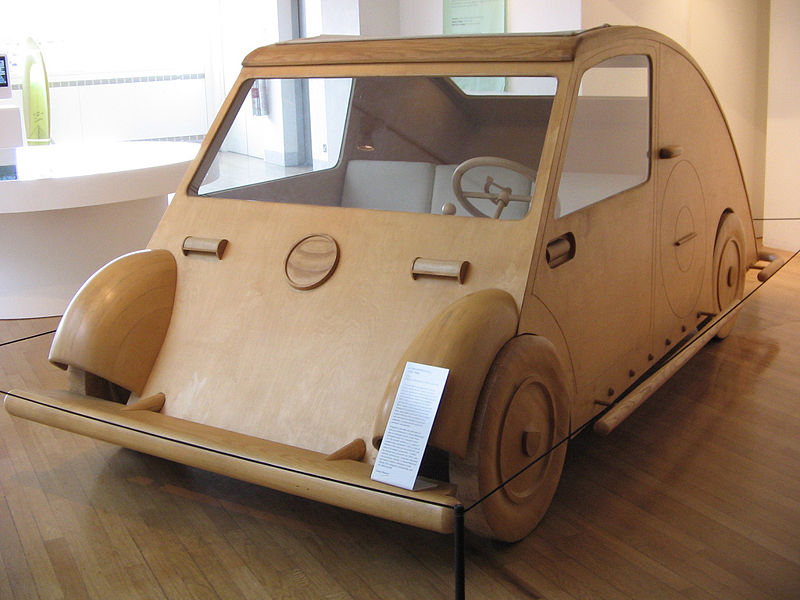
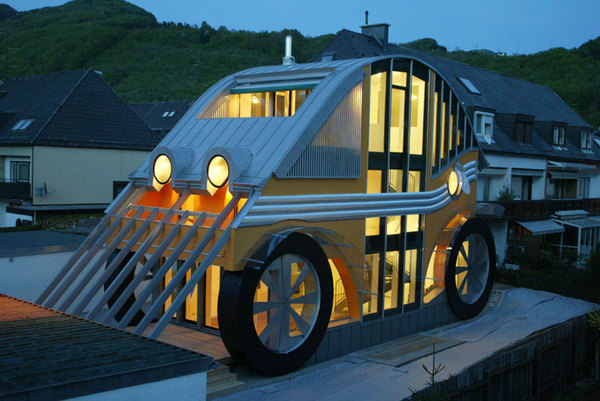



 In the wake of Saab’s demise, which car manufacturers will architect’s now turn to? One way to project the future is to extrapolate the past. With the industrialisation of mobility, the modern age gained its definition. In Vers Une Architecture, Le Corbusier confirms his fascination with the morphologies and technologies of aircraft and automobiles. For Le Corbusier, the house was a machine à habiter, (‘a machine for living in’ or a kind of static car). One would have thought then that Corbusier would have embraced Saab given its unique position as being a manufacturer of both aircraft and automobiles (SAAB: Svenska Aeroplan AktieBolaget) yet his ‘vroom with with a rue’ was overtly French: the Citroen 2CV. Le Corbusier even named one of his houses the Citrohan 2 and his own design proposals (see below) belie a 2CV lineage. Le Corbusier’s ride is based upon an ideological preference for the affordable and the compact. Compare this with the contemporary architect: Zaha Hadid owns a London black cab; Nigel Coates owned a Jensen Interceptor; a licence-free Peter Cook walks… please feel free to email us your own carchitect.
In the wake of Saab’s demise, which car manufacturers will architect’s now turn to? One way to project the future is to extrapolate the past. With the industrialisation of mobility, the modern age gained its definition. In Vers Une Architecture, Le Corbusier confirms his fascination with the morphologies and technologies of aircraft and automobiles. For Le Corbusier, the house was a machine à habiter, (‘a machine for living in’ or a kind of static car). One would have thought then that Corbusier would have embraced Saab given its unique position as being a manufacturer of both aircraft and automobiles (SAAB: Svenska Aeroplan AktieBolaget) yet his ‘vroom with with a rue’ was overtly French: the Citroen 2CV. Le Corbusier even named one of his houses the Citrohan 2 and his own design proposals (see below) belie a 2CV lineage. Le Corbusier’s ride is based upon an ideological preference for the affordable and the compact. Compare this with the contemporary architect: Zaha Hadid owns a London black cab; Nigel Coates owned a Jensen Interceptor; a licence-free Peter Cook walks… please feel free to email us your own carchitect.



000off_REGENTRIFICATION!?
 Where is Dalston? http://thisisntfuckingdalston.co.uk/
What is Dalston?
When is Dalston?
Where is Dalston? http://thisisntfuckingdalston.co.uk/
What is Dalston?
When is Dalston?
000off_WINDOW TAGGER IDENTIFIED
Thanks to Jenny, our former office manager, we have now identified the person responsible for tagging our Old Street office window…
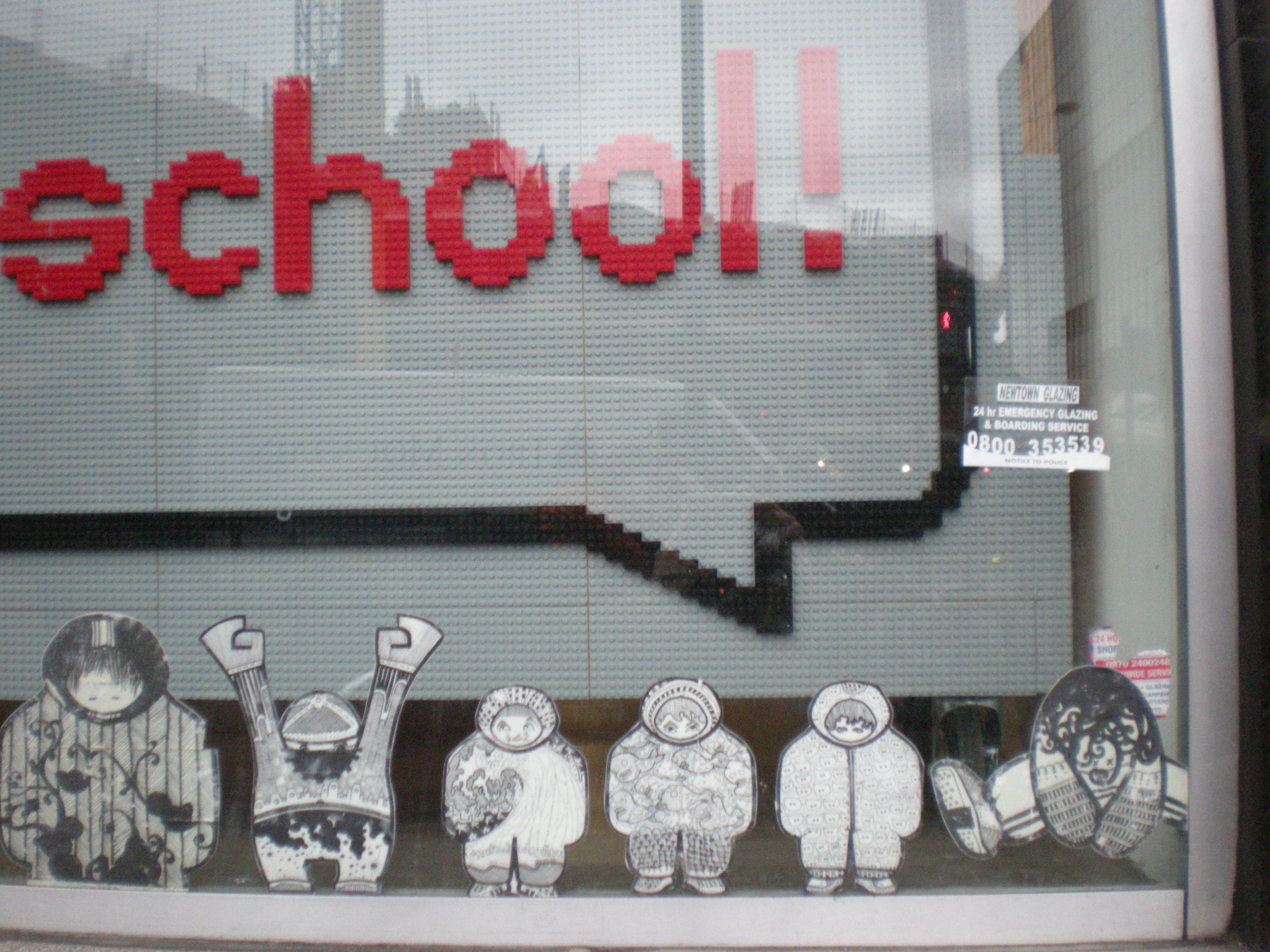
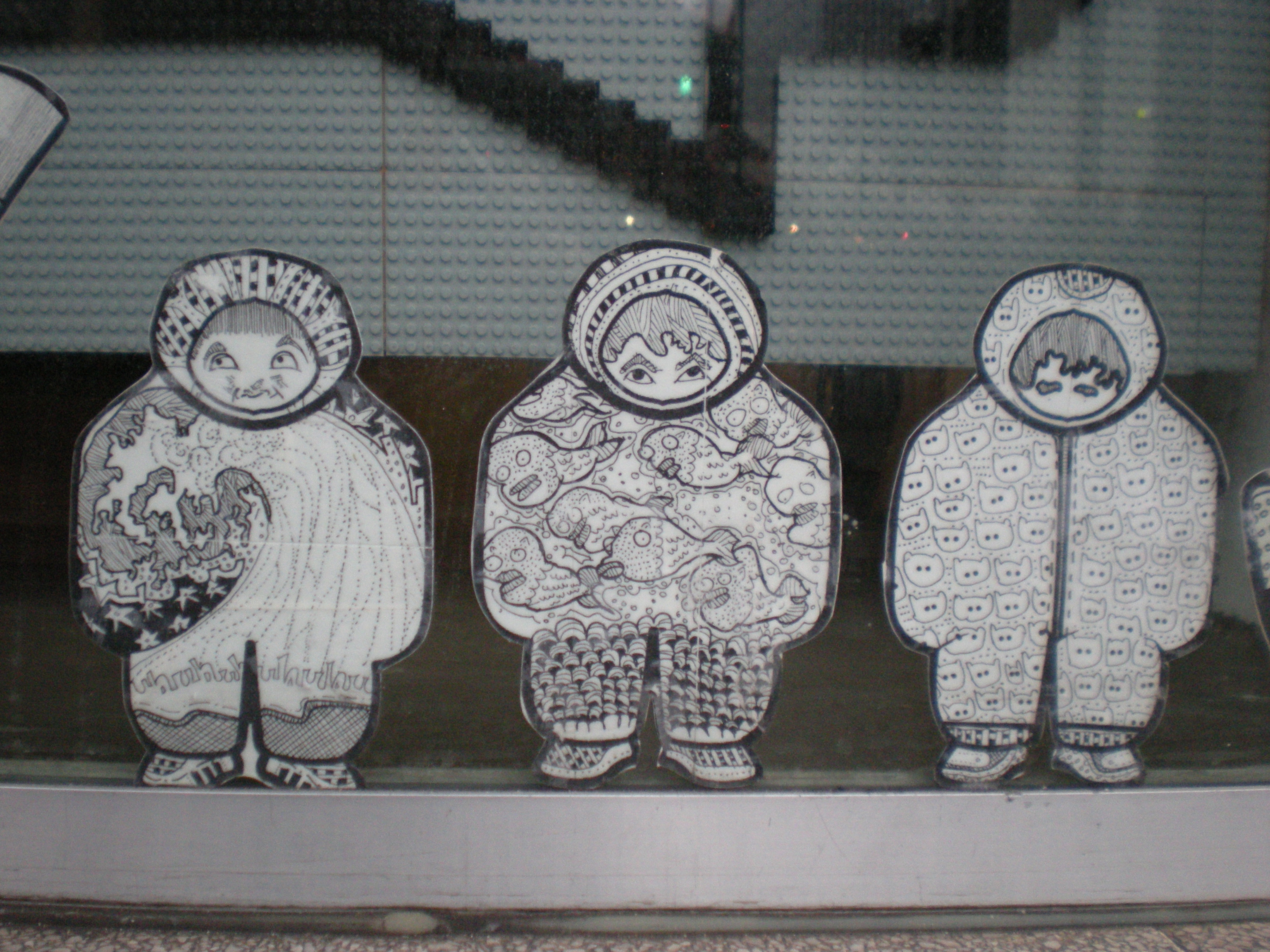 Our once office manager’s missive is timely. As she shuffles between her new son Barney (congrats Jenny!) and her keyboard, to be informed of the author of an informal communication between our office and the street is great. The author/artist obviously takes seriously what he does: this means that we should be sensitive to our surroundings and the signs that we encounter. It could have been graffiti, a public defacement notice follows close behind, a humble sticker, a joke, an adhesive business card…
Every day, as we leave the house, take a bus, a cycle, a walk or a tube,we encounter an Empire Of Signs. Leaving my home I am experience the following signage: 24. 5. Don’t Walk! Cross. 8. Oyster. Upstairs Restricted To Seating Only. “Shoreditch High Street Station Alight Here”. Great Western Street. Old Street. London’s Best Café? I’m Latté for work.
Our once office manager’s missive is timely. As she shuffles between her new son Barney (congrats Jenny!) and her keyboard, to be informed of the author of an informal communication between our office and the street is great. The author/artist obviously takes seriously what he does: this means that we should be sensitive to our surroundings and the signs that we encounter. It could have been graffiti, a public defacement notice follows close behind, a humble sticker, a joke, an adhesive business card…
Every day, as we leave the house, take a bus, a cycle, a walk or a tube,we encounter an Empire Of Signs. Leaving my home I am experience the following signage: 24. 5. Don’t Walk! Cross. 8. Oyster. Upstairs Restricted To Seating Only. “Shoreditch High Street Station Alight Here”. Great Western Street. Old Street. London’s Best Café? I’m Latté for work.

 Our once office manager’s missive is timely. As she shuffles between her new son Barney (congrats Jenny!) and her keyboard, to be informed of the author of an informal communication between our office and the street is great. The author/artist obviously takes seriously what he does: this means that we should be sensitive to our surroundings and the signs that we encounter. It could have been graffiti, a public defacement notice follows close behind, a humble sticker, a joke, an adhesive business card…
Every day, as we leave the house, take a bus, a cycle, a walk or a tube,we encounter an Empire Of Signs. Leaving my home I am experience the following signage: 24. 5. Don’t Walk! Cross. 8. Oyster. Upstairs Restricted To Seating Only. “Shoreditch High Street Station Alight Here”. Great Western Street. Old Street. London’s Best Café? I’m Latté for work.
Our once office manager’s missive is timely. As she shuffles between her new son Barney (congrats Jenny!) and her keyboard, to be informed of the author of an informal communication between our office and the street is great. The author/artist obviously takes seriously what he does: this means that we should be sensitive to our surroundings and the signs that we encounter. It could have been graffiti, a public defacement notice follows close behind, a humble sticker, a joke, an adhesive business card…
Every day, as we leave the house, take a bus, a cycle, a walk or a tube,we encounter an Empire Of Signs. Leaving my home I am experience the following signage: 24. 5. Don’t Walk! Cross. 8. Oyster. Upstairs Restricted To Seating Only. “Shoreditch High Street Station Alight Here”. Great Western Street. Old Street. London’s Best Café? I’m Latté for work.
165sei_BUILDINGS AS WEAPONS OF MASS DESTRUCTION.
At a recent exhibition of the structural engineer Webb Yates, Tom Robertshaw of Techniker raised the spectre that is earthquake retrofitting. With the projected doubling of the world’s population , this means that we are constructing more buildings now than at any time in our history. But how many of these buildings are safe? Furthermore how many buildings around could kill their occupants? Some of the world’s biggest cities have suffered earthquakes that have been catastrophic, where death rates were not proportionate to the earthquake’s magnitude, because of blasé attitudes towards seismic design. Cities need to confront the monumental problem of seismic retrofitting existing killer buildings. The design question is how to shore up an existing city of cards…
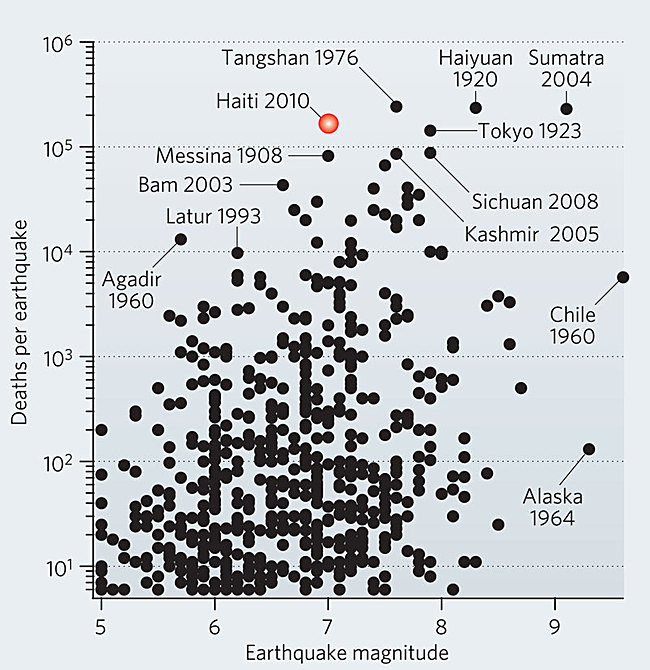 http://www.nature.com/nature/journal/v463/n7283/full/463878a.html
http://www.nature.com/nature/journal/v463/n7283/full/463878a.html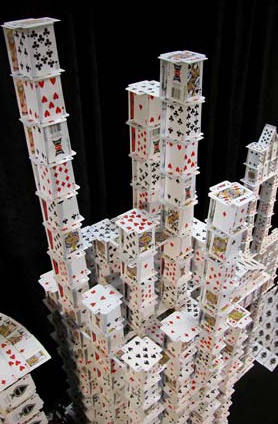
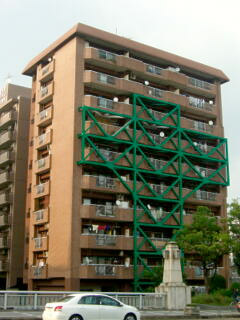 CASE CITY 1: Istanbul Metropolitan Municipality will establish a centre fully equipped with adequate technology and facilities in order to be prepared against a disaster that may affect Istanbul and to develop public consciousness about the disasters and specifically about earthquakes…
CASE CITY 1: Istanbul Metropolitan Municipality will establish a centre fully equipped with adequate technology and facilities in order to be prepared against a disaster that may affect Istanbul and to develop public consciousness about the disasters and specifically about earthquakes…
 http://www.nature.com/nature/journal/v463/n7283/full/463878a.html
http://www.nature.com/nature/journal/v463/n7283/full/463878a.html
 CASE CITY 1: Istanbul Metropolitan Municipality will establish a centre fully equipped with adequate technology and facilities in order to be prepared against a disaster that may affect Istanbul and to develop public consciousness about the disasters and specifically about earthquakes…
CASE CITY 1: Istanbul Metropolitan Municipality will establish a centre fully equipped with adequate technology and facilities in order to be prepared against a disaster that may affect Istanbul and to develop public consciousness about the disasters and specifically about earthquakes…

